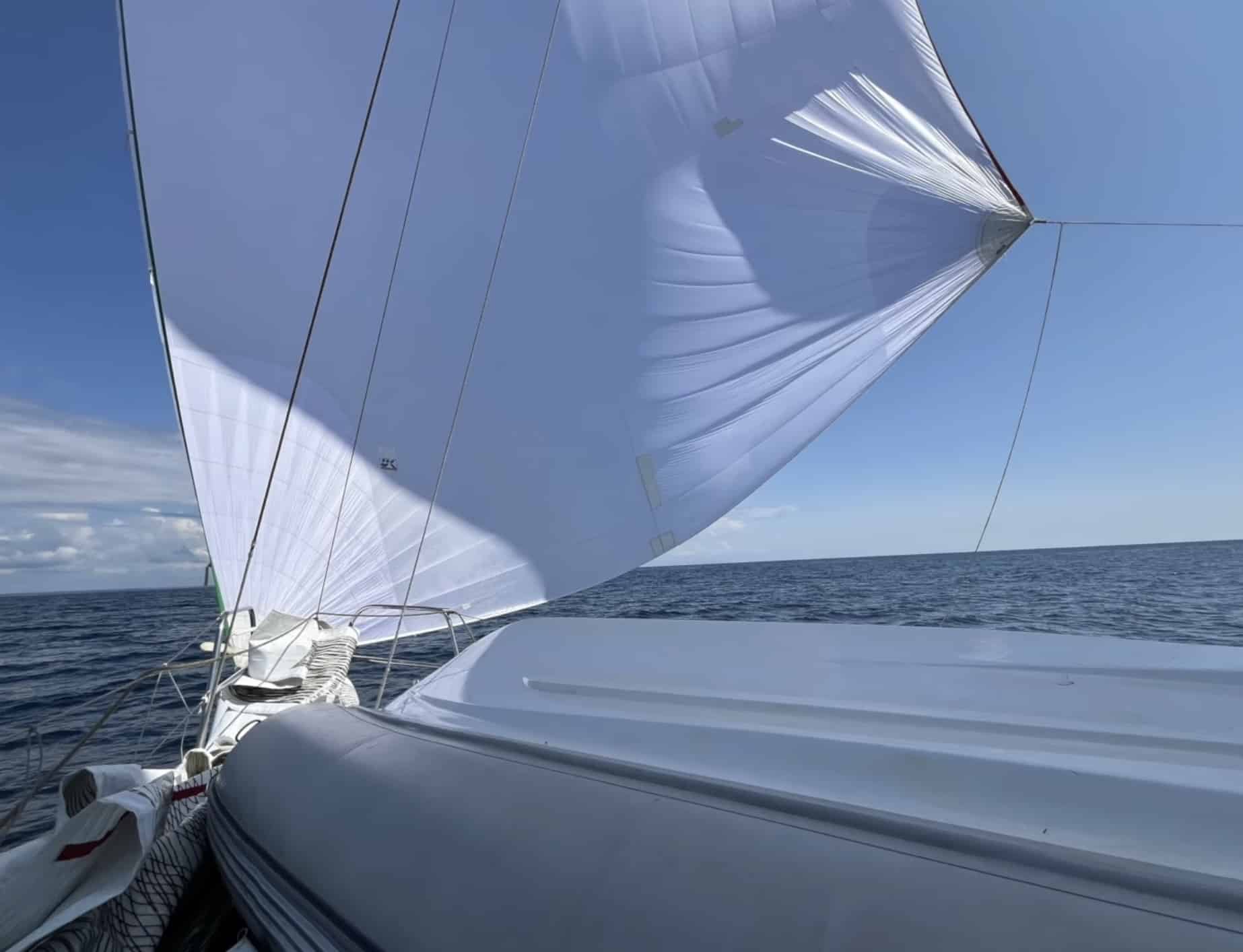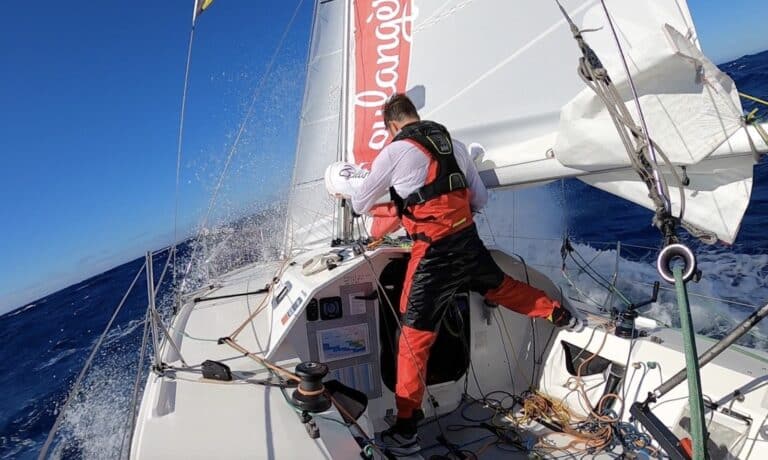By Adam Loory | Cracked Off and Reaching to Retirement
After sailing halfway around the world, I think that many people spend too much time preparing for heavy winds and not enough time for preparing for light air sailing, which is more likely found on traditional routes. Unless you sail a “super tanker,” boats can’t carry enough diesel to cover thousands of miles. Even if you can carry enough fuel for daysails and short cruises, who wants to motor downwind smelling diesel fumes that envelop the cockpit when your speed under power is similar to the windspeed.
When setting up my own boat, I made a sail selection mistake when developing my sail inventory. Since my boat only has room for one of my 180-square-meter asymmetrical spinnakers, I originally chose my heavy air runner because it is bullet proof and would survive shorthanded sailhandling errors; after all, spinnakers sometimes get away from you. But during that first year of cruising, I found the times I was most apt to set the chute was in light air because that’s when I needed more speed. In light winds, the heavy chute just sagged and got the wobblies, as shown here sailing north up the Florida coast.
Just before leaving on my trip to Nova Scotia and Newfoundland in 2025, I switched spinnakers and brought aboard my old, tired, A2, which is made out of much lighter nylon than the newer heavy-air A4. The lighter sail has become a work horse on light air runs. While sailing to Canada, we used the asymmetrical spinnaker nearly 50% of the time while under sail. In wavy conditions, the auto pilot slewed around a bit and I could hand steer much faster, but it could keep the slightly over trimmed chute full. These clips show us sailing at 4-6 knots in winds blowing 6-7 knots. On the flat water of the Bras D’or Lake, the autopilot steered a straight arrow course allowing us to relax. True, we couldn’t sail directly on our course, but we were able to make our destination by jibing downwind. The longer distance was more than made up for by the pleasant sailing. Books and screens were read, lunch was served and views were appreciated. Even our cat Max got to come on deck and check out our progress.
Having a dousing sock is key to successful sets, douses and jibes. In fact, when I made UK Sailmakers’ instructional video on how to use a cruising spinnaker 25 years ago, I said the dousing sock replaces several long-armed crew members, and it does. Here is how we accomplish a worry-free jibe. First, the boom preventer is released, the spinnaker gets socked, the mainsheet is tightened so that the boom is centered, the new running backstay is set, the boom crosses to the new leeward side and the old runner is released allowing the mainsail to be eased out for a broad reach. With the main jibed, then we can move the socked sail around the forestay, pre-set the new spinnaker sheet, raised the sock and start sailing again. While this takes some time, it is much faster than trying to untangle a spinnaker wrapped around the forestay, which happened last summer in Boothbay Harbor, Maine.
The trick to getting the dousing sock over the spinnaker easily is to turn nearly dead downwind so that the mainsail blankets the spinnaker. As the sail starts to collapse, it is much easier for the sock to come down over the sail. To see the video I made 25 years ago about how to use a cruising spinnaker click here:
To see a full selection of UK Sailmakers’ instructional videos and articles, click here.






Adam, thanks for the interesting insight. In your video, I’d be interested to know how you attached your sheets to the clew of your kite. Doug